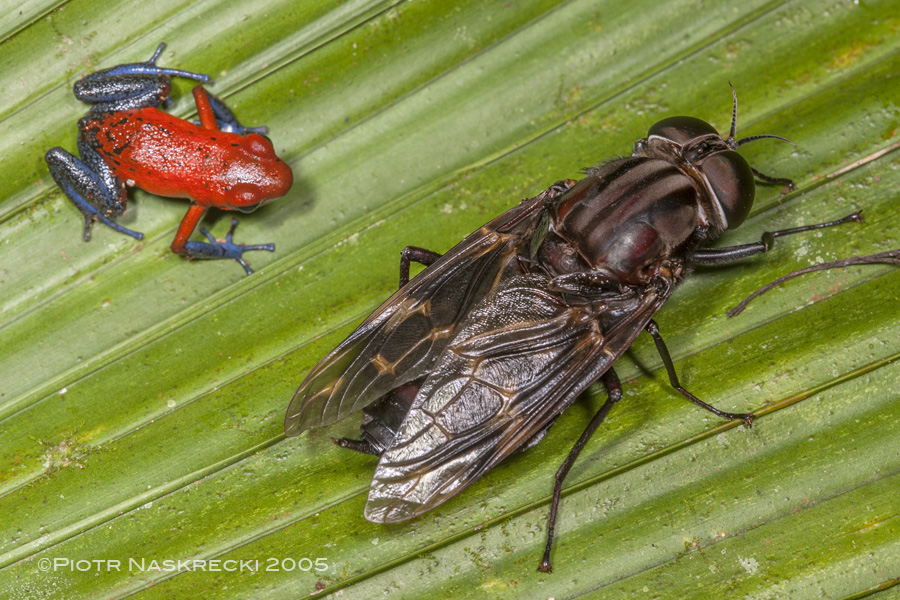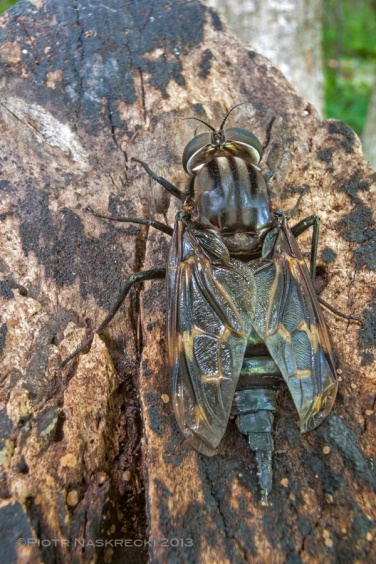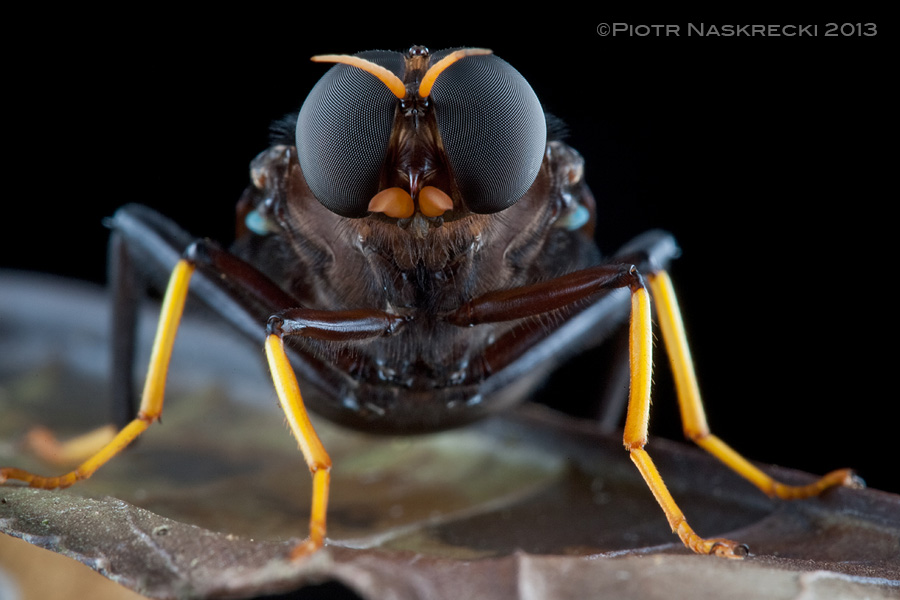
I always assumed that there existed at least a few immutable truths about the natural world, dogmas that had no exceptions, no matter how hard you looked for them. One of them, I thought, was the rule that flies, which cartoons and children books made me believe were the favorite food of frogs, should be significantly smaller than the frogs. And I pretty much accepted this gospel, until one day I found in the rainforest of Costa Rica, sitting on a palm leaf, a frog and a fly. This singular sighting shattered my entire belief system, or at least the part that pertained to frogs and flies. Because you see, the fly was a timber fly, a member of the family Pantophthalmidae, which are the largest flies in the world, some reaching the wingspan of 100 mm. Next to one of these monsters an adult poison arrow frog looks almost like a dog next to a horse.

Timber flies are a small family, consisting of only 2 genera and 22 species, all found in the lowland rainforests of Central and South America. In addition to their unholy size they differ from other flies in that their larvae are wood burrowers, something that traditionally has been the domain of longhorns and other beetles. There are other flies that feed on wood (some Syrphidae and Asilidae), but those are incapable of drilling their own tunnels in the wood and can only use those already created by beetles or other insects.
Little is known about the behavior of adult timber flies. Nobody is really sure if they feed at this stage, and if so, on what. They have never been seen mating, although oviposition has been observed. Females have a long, telescopic ovipositor, which they use to deposit eggs in the cracks of dead and live wood, depending on the species. These insects are not common – in all my years in the tropics I have only seen them four times, but each time my faith in the unshakable laws of nature suffered a bit more. What’s next, a land arthropod as big as a cat?



wow, the unusual difference in sizes between the vertebrate and invertebrate on the first photo here is quite fascinating
Your comment on their “unholy size” gave me a hearty laugh. Consider my belief system shaken, as well!
Some Tipulids (Ctenophora) are also supposed to be wood borers.
When I was in Ecuador 25 years ago, I caught a Pantopthalmid that is now in the Cornell University Insect Collection. The logs all around were full of exit holes, often with the remains of the pupal skins jutting out some distance. You can see some photos illustrating that at Giant flies with giant names.
They are very reminiscent of Tabanids! Super huge though, I would love to see one!
Reblogged this on Mark Solock Blog.